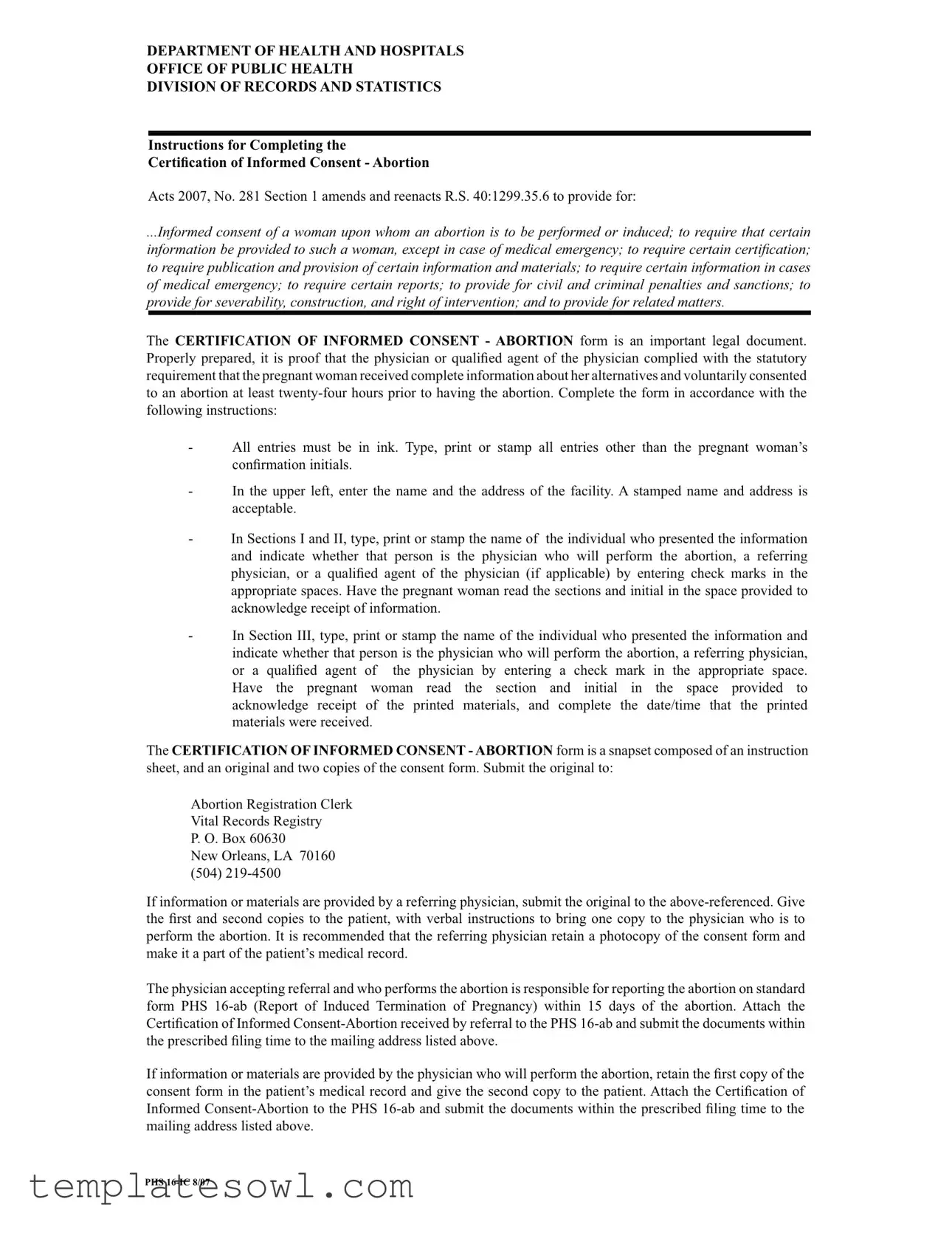Completing the Abortion Paper form accurately is essential. However, many individuals make common mistakes that can lead to delays or complications. Understanding these pitfalls can help ensure a smoother process.
One frequent error occurs when individuals do not read the instructions thoroughly. Skimming over vital details can result in omitted information, which may invalidate the form. Attention to the guidelines helps capture all necessary data accurately.
Another common mistake is failing to provide sufficient identification information. When submitting the form, it is crucial to include the full name, date of birth, and contact information. Incomplete identification can lead to difficulties in processing.
Omitting signatures is a critical error that individuals must avoid. The form requires specific signatures to confirm that the necessary consent has been obtained and that the individual understands the implications of the procedure. Missing a signature can lead to legal complications.
In addition, some people mistakenly use outdated forms. Regulations may change, and it is vital to use the most current version of the Abortion Paper form to ensure compliance with the law. Checking for updates before filling it out is always a good practice.
Many individuals also overlook the importance of accuracy in reporting medical history. Inaccuracies can lead to misinformed decisions. Therefore, taking the time to double-check this information is beneficial.
Another error is neglecting to provide required medical documentation. Some cases may necessitate additional medical records or notes from healthcare providers. Failing to include these documents can hinder or delay processing.
People sometimes forget to make copies of the completed form. Keeping a copy for personal records can be very helpful in case of any discrepancies or follow-up needed. This precaution is recommended to maintain clear documentation.
Mistakes in understanding what constitutes a medical emergency can also create issues. Providing clarification and details in such cases is essential to ensure that the right protocol is followed. This distinction is critical for proper processing.
Finally, delays can occur when individuals wait too long to submit the form. It is important to adhere to any deadlines that may apply to ensure there are no additional complications. Timeliness is vital in these situations.
By being aware of these common mistakes and taking precautions to avoid them, individuals can help ensure the Abortion Paper form is completed correctly and efficiently.


